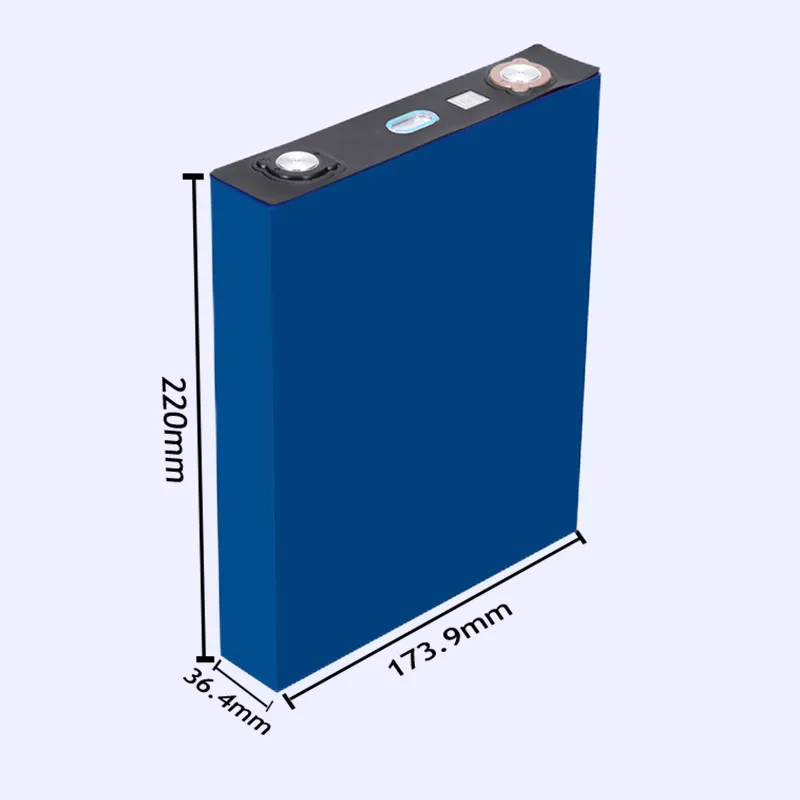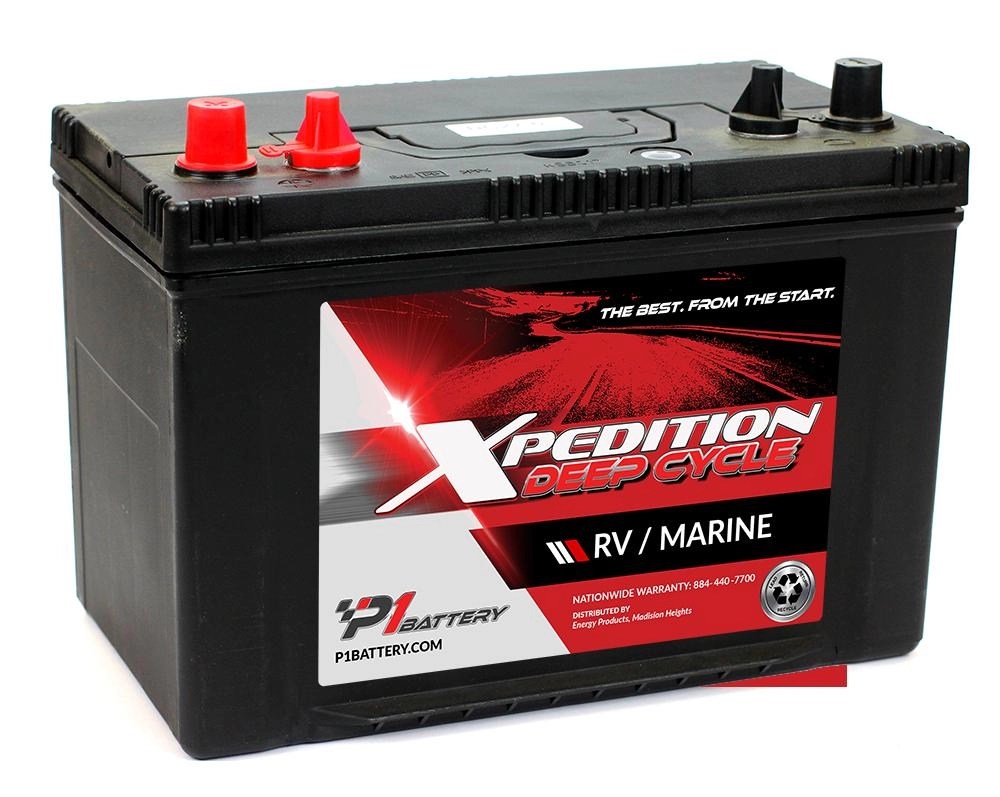When selecting a deep cycle battery, weight is a crucial factor to consider. Whether you need it for an RV, boat, or solar system, understanding deep cycle battery weight helps you make a more informed choice. But why does weight matter, and how does it affect performance? In this article, we will explore the factors influencing deep cycle battery weight, compare various types, and provide guidance on how to choose the right battery for your needs.
Part 1: Why Does Deep Cycle Battery Weight Vary?
What is a Deep Cycle Battery?
Deep cycle batteries are specifically designed to provide sustained power over long periods. This makes them heavier than standard car batteries. Deep cycle batteries use thicker plates and materials such as electrolyte, making them more durable and capable of withstanding deeper discharges and longer cycles. Unlike starting batteries, which provide only short bursts of power, deep cycle batteries use more robust and heavier components for long-term performance.
For instance, a typical deep cycle battery contains thicker lead plates than a standard car battery, which adds to the overall weight. This design allows it to handle frequent charging and discharging, making deep cycle batteries essential for applications like marine, RV, and off-grid solar systems.
Part 2: How Does Weight Affect Deep Cycle Battery Performance?
Weight plays a significant role in the performance of a deep cycle battery. A heavier battery often indicates a larger capacity, meaning it can store more energy and power devices for longer periods.
- Greater Capacity: Heavier batteries tend to have higher Amp-hour (Ah) capacity, meaning they can last longer between charges.
- Increased Durability: Heavier batteries are often more durable and better suited for high-demand applications. For example, a 100Ah deep cycle battery will be heavier than a 50Ah battery, but it will provide longer run times under heavy loads.
However, weight can also be a disadvantage if portability is important. For example, if you frequently move the battery, such as when camping or using it in a mobile home, a heavier battery can become cumbersome. In such cases, balancing weight and performance is crucial.
Part 3: What Factors Influence Deep Cycle Battery Weight?
Several factors influence the weight of a deep cycle battery:
- Battery Chemistry: Different chemistries, such as lead-acid, lithium-ion, and AGM (Absorbent Glass Mat), result in varying battery weights. For example, lead-acid batteries are heavier due to the lead plates, while lithium-ion batteries are much lighter.
- Capacity: Higher capacity batteries require more internal material, which naturally increases their weight. Even with the same chemistry, a 200Ah battery is heavier than a 100Ah battery.
- Size and Design: Batteries with more cells and thicker plates are generally heavier. For example, batteries designed for solar power systems are often larger and heavier to ensure they can provide adequate energy storage.
- Construction Materials: The materials used for the casing and internal components also contribute to the battery’s weight. Some battery casings are designed to be more durable, adding extra weight.
Part 4: Weight Differences Between Common Types of Deep Cycle Batteries
AGM vs. Lithium vs. Lead-Acid Batteries: A Comparative Overview
The battery chemistry significantly affects the weight of deep cycle batteries. Let’s look at the weight differences between the most common types:
- Lead-Acid Batteries
These are the most traditional deep cycle batteries and are known for being cost-effective. However, they are typically very heavy. A typical 12V, 100Ah lead-acid battery weighs around 60-70 pounds. - AGM (Absorbent Glass Mat) Batteries
AGM batteries are a type of sealed lead-acid battery that tends to be slightly lighter. A 12V, 100Ah AGM battery weighs around 60 pounds, but it is more durable and requires less maintenance. - Lithium-Ion Batteries
Lithium-ion batteries are known for being significantly lighter than lead-acid or AGM batteries. They also offer higher efficiency and longer lifespans, but their weight is often much lower, making them ideal for those seeking portability without sacrificing performance. Learn more about 12V battery types and which one is for you.
Understanding the factors influencing deep cycle battery weight and how weight affects performance enables you to make a more informed decision when choosing the right battery for your RV, boat, or solar power system. Whether you prioritize weight, capacity, or durability, there’s a deep cycle battery that fits your needs for use in the KHZH region.
Lithium-Ion Batteries: A Comprehensive Overview
Lithium-ion batteries are significantly lighter than traditional lead-acid batteries. For example, a 12V, 100Ah lithium-ion battery can weigh as little as 30 pounds. This weight reduction, coupled with longer lifespans and faster charging capabilities, makes lithium-ion batteries a more popular choice, even with the higher price tag.
Part 5: Weight Comparison of Deep Cycle Batteries by Group Size
Deep cycle batteries come in various group sizes, which also affect their weight. Common group sizes include Group 24, Group 27, and Group 31. Here’s a general comparison of the weights of these group sizes batteries:
Part 6: Balancing Weight, Performance, and Cost in Deep Cycle Battery Selection
When selecting a deep cycle battery, it’s important to strike a balance between weight, performance, and cost. Heavier batteries often offer better performance, but they can be more difficult to transport and install. Here’s how to make the decision:
- Prioritize Performance: If performance is your primary concern, opt for a higher-capacity, heavier battery, especially for energy-intensive applications like off-grid power or RVs.
- Portability Matters: Lithium-ion batteries offer a good balance between performance and weight, making them ideal for portable applications, even with their higher price.
- Budget Considerations: Lead-acid batteries are the most cost-effective option, but they come with the tradeoffs of increased weight and long-term maintenance needs.
Part 7: Weight of Fully Charged Deep Cycle Batteries
A common question is whether a fully charged deep cycle battery is heavier than a discharged one. In theory, the flow of electrons during charging is so minimal that it has a negligible effect on the weight in any noticeable way. Therefore, the weight of a battery does not significantly change based on whether it is fully charged or not.
However, the key distinction lies in the energy stored within the battery, not its physical mass.
Part 8: Optimal Weight for Deep Cycle Batteries
Whether a battery should be heavier or lighter depends on your specific needs. Heavier batteries, like lead-acid or AGM types, generally offer more capacity and durability. These are well-suited for applications requiring sustained power, such as solar power systems, because they can store more energy.
On the other hand, lighter batteries, like lithium-ion, have their own advantages. They are easier to transport and install. While their upfront cost may be higher, they can be more cost-effective in the long run, thanks to their longer lifespan and faster charging speeds.
Part 9: Conclusion
The weight of a deep cycle battery is crucial to its performance, portability, and cost. Heavier batteries like lead-acid offer higher capacity, while lighter options like lithium-ion are more portable and have longer lifespans. When choosing the right battery, it’s important to consider your specific needs—whether it’s the amount of power required, how often you need to move the battery, or your budget. Ultimately, the key is to find the right balance between weight, performance, and cost to meet your requirements.
Keywords:
- Ufine
- Electronics Engineering Writer
Liquid Metal Batteries vs. Lithium Batteries: A Comprehensive Comparison
Explore the key differences between liquid metal batteries and lithium batteries. In this detailed analysis, we will explore their functionalities, applications, advantages, disadvantages, cost factors, and future prospects. Understanding these two technologies will help you make informed decisions about battery selection.
Key Features and Applications
Liquid metal batteries are an emerging technology offering high energy density and faster charging times. These batteries are typically used for large-scale energy storage systems and are promising for grid-scale energy storage and renewable energy integration.
Lithium batteries, on the other hand, have been widely adopted in consumer electronics, electric vehicles, and other industries due to their lightweight nature, long lifespan, and high efficiency. They are an ideal solution for portable power needs.
Advantages and Disadvantages
Advantages of Liquid Metal Batteries:
- High energy density
- Fast charging times
- Long lifespan
Disadvantages of Liquid Metal Batteries:
- High production costs
- Limited commercialization
Advantages of Lithium Batteries:
- High efficiency
- Lightweight
- Longer lifespan than traditional lead-acid batteries
Disadvantages of Lithium Batteries:
- Relatively higher cost
- Potential environmental impact from the disposal of hazardous materials
Cost Considerations
Liquid metal batteries are generally more expensive due to their complex manufacturing processes, while lithium batteries are more cost-effective due to mass production.
Future Prospects
With ongoing research, liquid metal batteries are expected to become more competitive and potentially significantly impact the energy storage sector. Meanwhile, lithium batteries are expected to remain a primary choice in the short term but will face increasing competition from alternative technologies.
Understanding Lipo Batteries: Capacity, Lifespan, and More
Lipo (Lithium Polymer) batteries are widely used in various applications, from drones to smartphones. This guide covers everything you need to know about Lipo batteries, including capacity, energy density, and cycle life. Learn how to optimize performance and avoid common issues that can shorten their lifespan.
Key Features of Lipo Batteries
Lipo batteries are known for their compact size, lightweight nature, and versatile form factor. They offer excellent energy density and high discharge rates, making them ideal for high-power applications.
Capacity and Energy Density
The capacity of Lipo batteries is measured in mAh (milliampere-hours), and their energy density is generally higher than other lithium-based batteries. This makes Lipo batteries well-suited for applications where space and weight are at a premium.
Lifespan and Cycle Life
A typical Lipo battery can last for 300 to 500 charge cycles, depending on usage. Proper care and maintenance, such as avoiding over-discharge, can significantly extend the battery’s lifespan.
What is a U1 Battery?
A U1 battery is a common battery size used in various applications, including small vehicles, motorcycles, and recreational vehicles. In this section, we will explain the dimensions, types, and comparison of U1 batteries with other batteries. You will also find valuable maintenance tips to ensure optimal performance.
Types of U1 Batteries
U1 batteries come in different types, including AGM (Absorbent Glass Mat) and lithium. AGM batteries are known for their durability and ability to handle high power demands, while lithium U1 batteries offer the advantage of being lightweight and having a higher energy density.
AGM vs. Lithium U1 Batteries
The choice between AGM and lithium U1 batteries depends on factors such as cost, weight, and power requirements. AGM batteries are more affordable but heavier, while lithium U1 batteries are more expensive but offer a superior power-to-weight ratio and a longer lifespan.









